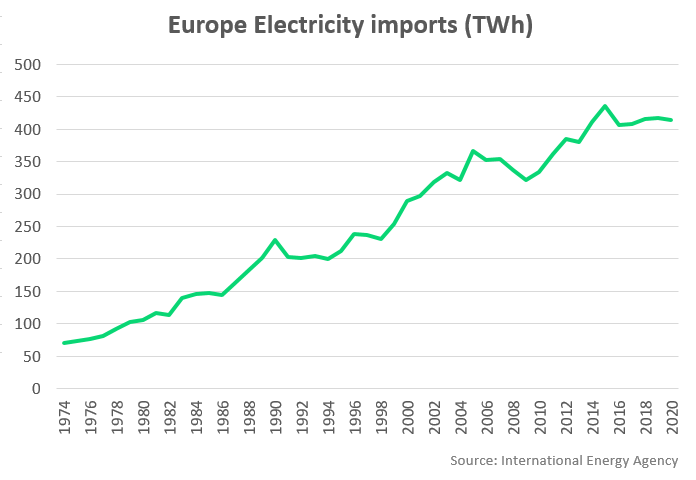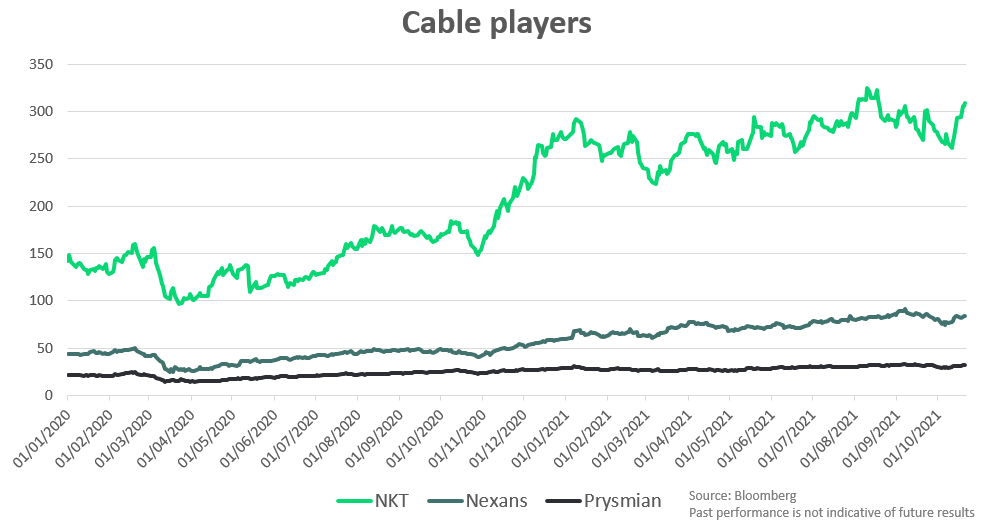Could electricity become an easily tradeable commodity that countries could exchange in real time? Progress is being made towards building an EU grid that would eliminate geographical constraints and distribute energy around the continent. Here’s how.
Lights out
In a recent press conference, Swiss President Guy Parmelin warned that the country could face electricity shortages, during weeks or even months, by 2025. This could be our economies’ next big threat, as it would mean factories cutting production, banks opening for reduced hours, and fewer trains running – a slowed-down economy once again.
The challenge is twofold: first, Switzerland does not produce all of its electricity and must import ~20% from Germany, with a gap set to widen as nuclear energy is being phased out. Second, Switzerland relies on the EU to fill this gap, which might be the biggest issue, given that the EU is seeing major structural changes in its energy production, as it tried to reach climate-related goals for various milestones.
Switzerland is not the only country facing this threat. The world is experiencing soaring energy prices and trembling ahead of winter’s cold nights. Since May, the price of a basket of oil, coal and gas has soared by 95%. However, even when prices rise, these resources can still be bought. With electricity, things are a little more complicated.

Trading electricity is not easy
Managing energy resources is no easy task. And in the case of electricity, things get even more complex. Europe is battling to increase investment in renewable energy production, slowly moving away from coal and nuclear power. However, renewable production is highly dependent on weather factors: too many clouds or not enough wind can mean not output. Additionally, electricity is much harder to store than natural gas, which often means that it must be consumed immediately, and close to the production location.
Alternatives to separate consumption from production were explored, using large batteries for example, but were quickly abandoned because of the impossibility of running operations at scale. As a result, only 4% of the electricity produced in rich countries is traded across borders, a very small number compared with gas (24%) and oil (46%). Is there any way that the EU could find a solution to the issue?
Sharing is caring
Indeed, there is, and the answer is not separating consumption and production in time, but in place. The solution seems to lie in building a massive grid, above and below the sea, connecting electricity producers and consumers cross-country, so that the extra production on one side can be distributed to another side.
We can take the example of Denmark, which manages to run solely on its wind turbines when the wind blows. But what if it doesn’t? As the country does not own the massive batteries needed to stock extra production for windless days, they have a cable running to Norway, which has great hydroelectric potential. If the wind blows, both countries use wind to save water in the reservoir, and when it doesn’t, Norwegian lakes empty a little to save the Danes. We can summarize it three words: sharing is caring.
If you multiply this type of operation, connecting all the suppliers and consumers across Europe, the economy of electricity suddenly transforms. Offshore and onshore wind farms and hydroelectric solutions would all be plugged into the same grid to provide for the continent. From local production having to be consumed fast, electricity becomes a tradeable commodity that can be spread following countries’ needs, and produced in a decentralized manner. Electricity shortages would be minimized, if not completely eliminated.
Plan of action
Naturally, this plan was great news for cable producers and layers, which have seen their orderbooks filled. Credit Suisse estimates that undersea wiring alone will be a $6.4 billion market in 2022 and that cable firms’ revenues from offshore wind instalments will be multiplied by 3 between 2020 and 2035.
The three main companies active in the industry are Nexans (French), NKT (Danish) and Prysmian (Italian). Investor enthusiasm has sent the share prices of these companies up between 48% and 125% in the last two years.

These companies do not only produce these gigantic power cables, but they also install them. Technological progress has allowed the laying of cables at depths of 3,000 metres, opening many possibilities, including the Mediterranean Sea. What’s more, they have around 80% of market share outside of China, which produces most of its own consumption anyways.
Many projects are underway, such as linking Greece and Israel, France and Ireland. Some projects are much more ambitious, such as connecting Morocco and Great Britain. Overall, Nexans’ CEO Christopher Guérin estimates that around 72,000 kilometres of cables will be laid in the decade to 2030, around 7 times the current stock.
Conclusion
Considering that renewable energy investments are only running at half the speed needed to reach the climate goals of 2050, we expect rising investment in this field in the coming years.
Since the only hurdle seems to be logistical, with the distribution of the generated electricity across Europe, we believe that a grid solution makes sense, bringing more efficiency and equality throughout the continent.





